Recent Awards From The Decorative Arts Trust Reveal A Changed Scholarly Landscape
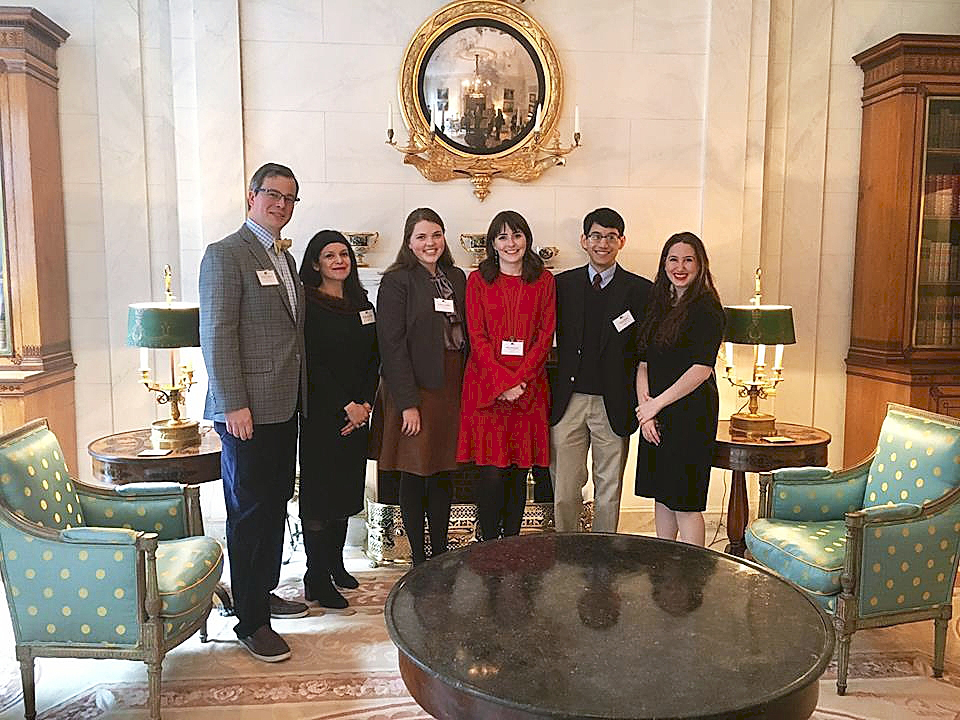
The Decorative Arts Trust’s Research Grants program began in 2003 with an award to Matthew A. Thurlow, left, now the organization’s executive director. With Thurlow are, from left, 2017 recipients Catherine Acosta, Candice Candeto, Katie McKinney, Daniel Sousa and Margot Bernstein.
By Laura Beach
MEDIA, PENN. — Twenty years and dozens of research grants later, the Decorative Arts Trust (DAT) has insight into the long arc of scholarship. Each year since 2003 the DAT, whose headquarters are 13 miles west of Philadelphia but whose programs span the globe, has underwritten graduate-level research into historic art and design. With the cumulative total of awards now standing at 117, two truths emerge: young scholars are taking a far more worldly approach to their investigation of the past, and many are doing so at the doctoral level.
The DAT originally tended to fund object-based studies of American artifacts. In fact, for the program’s first seven years awards went exclusively to students enrolled in the Winterthur Program in American Material Culture, a master’s level course affiliated with the University of Delaware. Fast forward to 2023: half of new DAT awards are to students exploring international topics, from the Caribbean to India, and some are to international applicants, once few and far between.
“It’s a wonderful opportunity to continue to tie into European students who are conducting research that either informs directly on the material culture story of the Americas or tangentially — in terms of European topics and makers — are tied to many of the narratives we encounter through DAT Study Trips Abroad and elsewhere,” says Matthew A. Thurlow, DAT executive director.
Thurlow recalls the program’s origins 20 years ago, when as a Winterthur graduate student he was its first recipient. “My thesis project with Wendy Cooper was on Thomas Constantine, an early Nineteenth Century New York cabinetmaker hired to create furnishings for the US Capitol, an unusual niche that created an interesting narrative. Completing my research involved traveling to New York, Washington and North Carolina, which I couldn’t afford. I asked my professor, Brock Jobe, for guidance. He in turn approached the Decorative Arts Trust.” So began the DAT Research Grants program, the organization’s first significant new funding venture since the early 1980s.
Today Jobe is president of the DAT’s Board of Governors, which typically awards between 10 and 15 graduate research grants each year. One, the Marie Zimmermann Grant, is allocated to projects focusing on late Nineteenth and early Twentieth Century topics. Another, the DARTS Grant, sponsored by the Decorative Arts Society of Orange County, is reserved for students enrolled in a West Coast-based graduate program or pursuing a West Coast topic.
Thurlow reflects, “People are always wondering if interest in decorative arts and material culture is waning. I certainly don’t see that in graduate circles. There is as much enthusiasm as ever for objects. What has changed are the questions graduate students are asking of objects, the narratives students are trying to tell through their research. Much more thematic topics of study are defining trends in objects research today.”
The DAT’s heightened visibility nationally has also prompted change. Thurlow says, “As the organization becomes better known, it appeals to students studying a much broader range of material culture. One unintended consequence is that the program is more focused on PhD dissertation research than on master’s thesis work. Contributing to that change is the fact that some master’s programs have stopped requiring a thesis or discontinued operations altogether.”
Thurlow’s description of the Decorative Arts Trust as a community foundation seems especially apt given the organization’s robust role in facilitating introductions among enthusiasts. As Sara Long, who manages the DAT’s communications and marketing effort, observes, “Trust audiences really enjoy meeting young scholars. They make connections and share resources. That exchange is central to what the DAT does.”
Once the pinnacle of American decorative arts research, furniture may no longer command the scholarly attention it did in the last quarter of the Twentieth Century, when regional surveys of forms and monographic studies of makers dominated. Far from regretting the change, Thurlow sees himself not as an advocate for a particular kind of scholarship but for scholarship itself. He says, “The DAT’s Research Grants program should be a reflective endeavor driven by the work students are conducting. Our decision to support a broad range of candidates and projects is intentional.”
Which is not to say Thurlow is indifferent to the change. On the contrary. Of the field’s newest recruits, he says, “Their work is so inspirational. These young scholars are gifted, broad thinking and a credit to the talented faculty with whom they are working.”
DAT’s 2023 Research Grants Span The Globe
MEDIA, PENN. — Announced June 2, the Decorative Arts Trust’ Research Grants for 2023 go to 15 recipients, representing not only the largest group of scholars to be funded by the organization in a single year, but also the most diverse, with seven projects supporting work on collections outside the United States. Eleven recipients are doctoral students.
Elliot Camarra, a master’s student at Bard Graduate Center, is studying Fifth to Fourth Century BCE votive mirrors from the Greek sanctuary of Artemis Brauronia. She will visit the Brauron Archeological Museum in Greece.
Graham Feyl, a PhD student at the University of California, Santa Barbara, is exploring what has been labeled as “queer craft” in San Francisco from the late 1960s to the late 1990s, with particular attention to the work of ceramist Howard Kottler, painter and performance artist Jerome Caj and painter Martin Wong.
A PhD student at Yale University, Isabella Galdone is examining pictures, samplers and quilts in the collection of the Los Angeles County Museum of Art as part of a broader review of the work of women painters in Britain between 1790 and 1890 and its relationship to textiles of the same period.
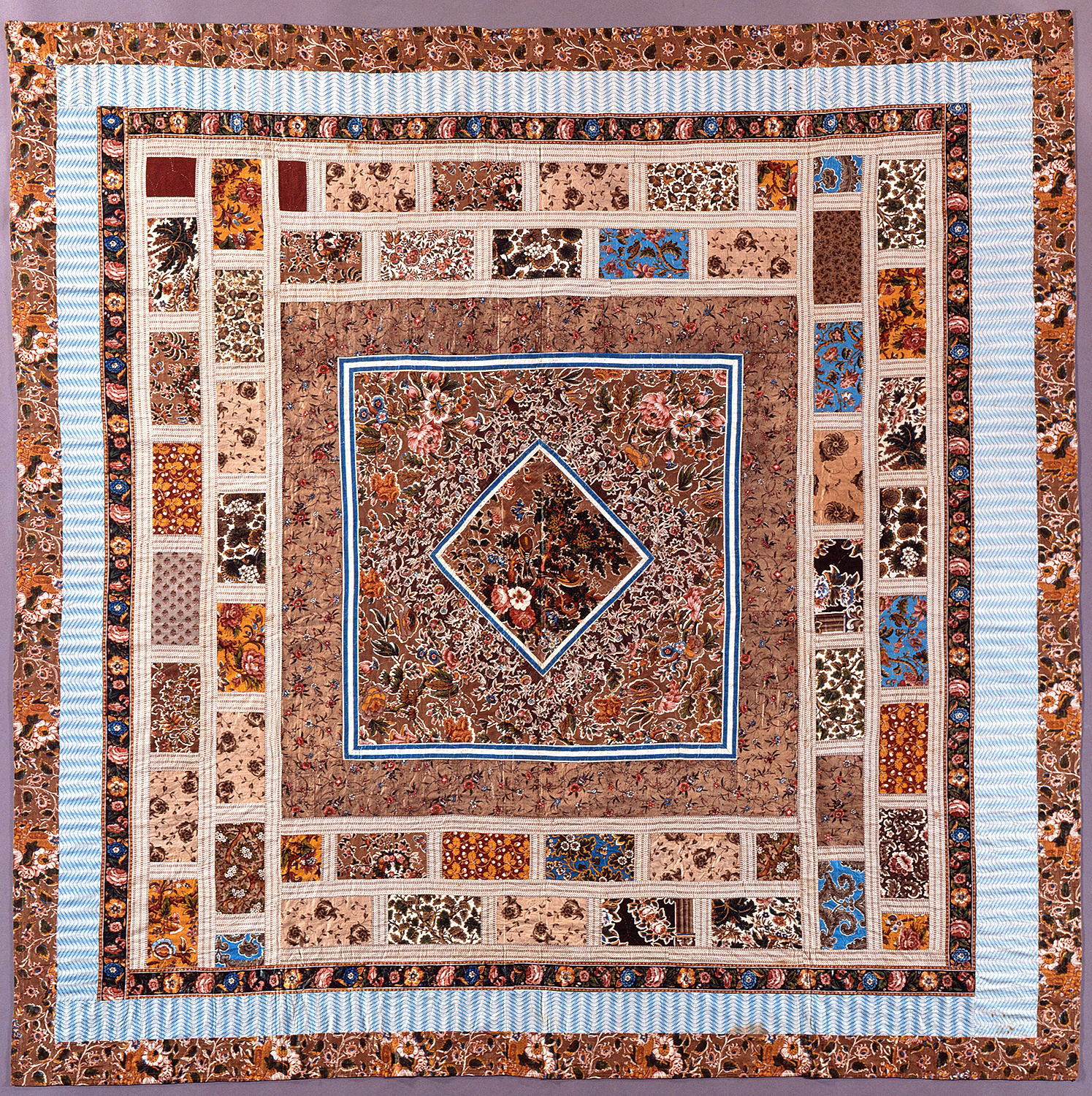
2023 recipient Isabella Galdone is studying textiles crafted by women, such as this English quilt of circa 1840. Los Angeles County Museum of Art.
Cara Marie Green, a master’s student at the Fashion Institute of Technology, is analyzing American-Scandinavian links within textiles, including costume, as evidenced by comparative examples at several museums in Norway.
Andrew Grider, an undergraduate student at Virginia Commonwealth University, will research and inventory furnishings in two bedrooms at the Hill House Museum in Portsmouth, Va.
Yale University doctoral candidate Lily Higgins will study bilingual samplers at the Historic New Orleans Collection and the Longfellow-Evangeline State Historic Site as part of her investigation into how self-referential inscriptions and visual imagery fundamentally alter the ways in which an object could be used and understood.
Alida R. Jekabson, a doctoral candidate at the University of California, Santa Barbara, is investigating archives related to craft histories present at the 1915 Panama Pacific International Exposition in San Francisco. Her visits to California institutions will focus on the Indigenous traditions of textile- and basket-making.
Laura C. Jenkins, a PhD student at the Courtauld Institute of Art, is conducting fieldwork at Versailles and several sites in Paris as part of her analysis of the influence of French Eighteenth Century interiors on Gilded Age New York.
Sybil F. Joslyn, a PhD student at Boston University, will visit the DAR Museum to examine the furniture suite in the 1910s Relic Room. She will also study maritime history, scrimshaw and other artwork at nearby Washington DC institutions.
Tracy Meserve, a master’s student at George Washington University, is studying the history of silk in Calabria, Italy, and the continuation of the craft in the region. She will visit Dal Baco alla Seta silk textile company in Cortale, and Nido di Seta, an agricultural cooperative and silk museum in nearby San Flores.
Alyse B. Muller, a doctoral candidate at Columbia University, is researching Sèvres ceramics. She will visit the Sèvres archives in Paris, researching painter Jean-Louis Morin and the port scenes featured on Sèvres porcelain.
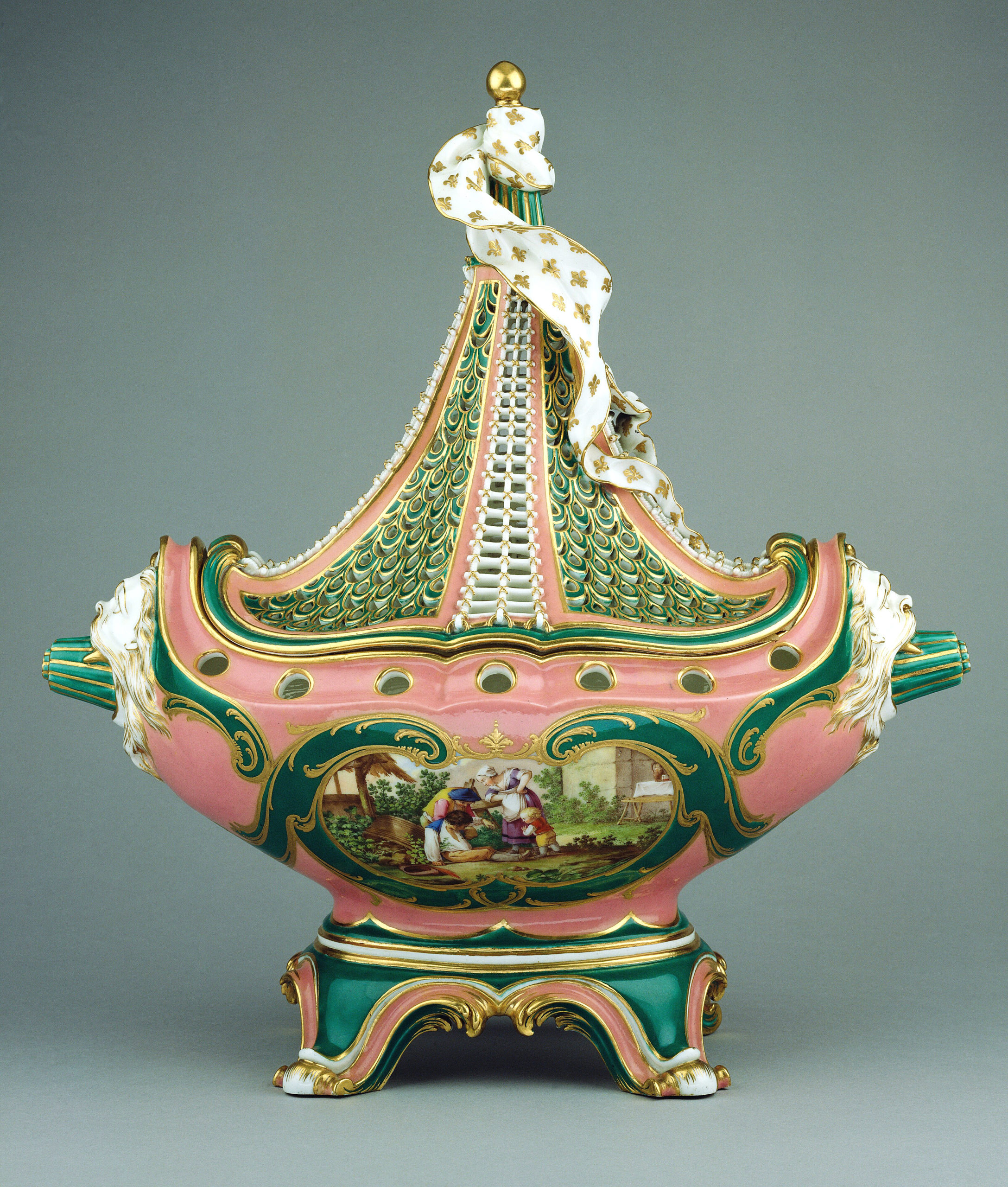
2023 recipient Alyse B. Muller is studying Sévres porcelain. Lidded pot-pourri vase, circa 1760, France. J. Paul Getty Museum, Los Angeles.
Damiët Schneeweisz, a PhD student at the Courtauld Institute of Art, will complete a combination of archival- and collections-based research at several institutions in Suriname and Bermuda as part of her investigation of the production, use and movement of miniatures in the Eighteenth Century circum-Caribbean.
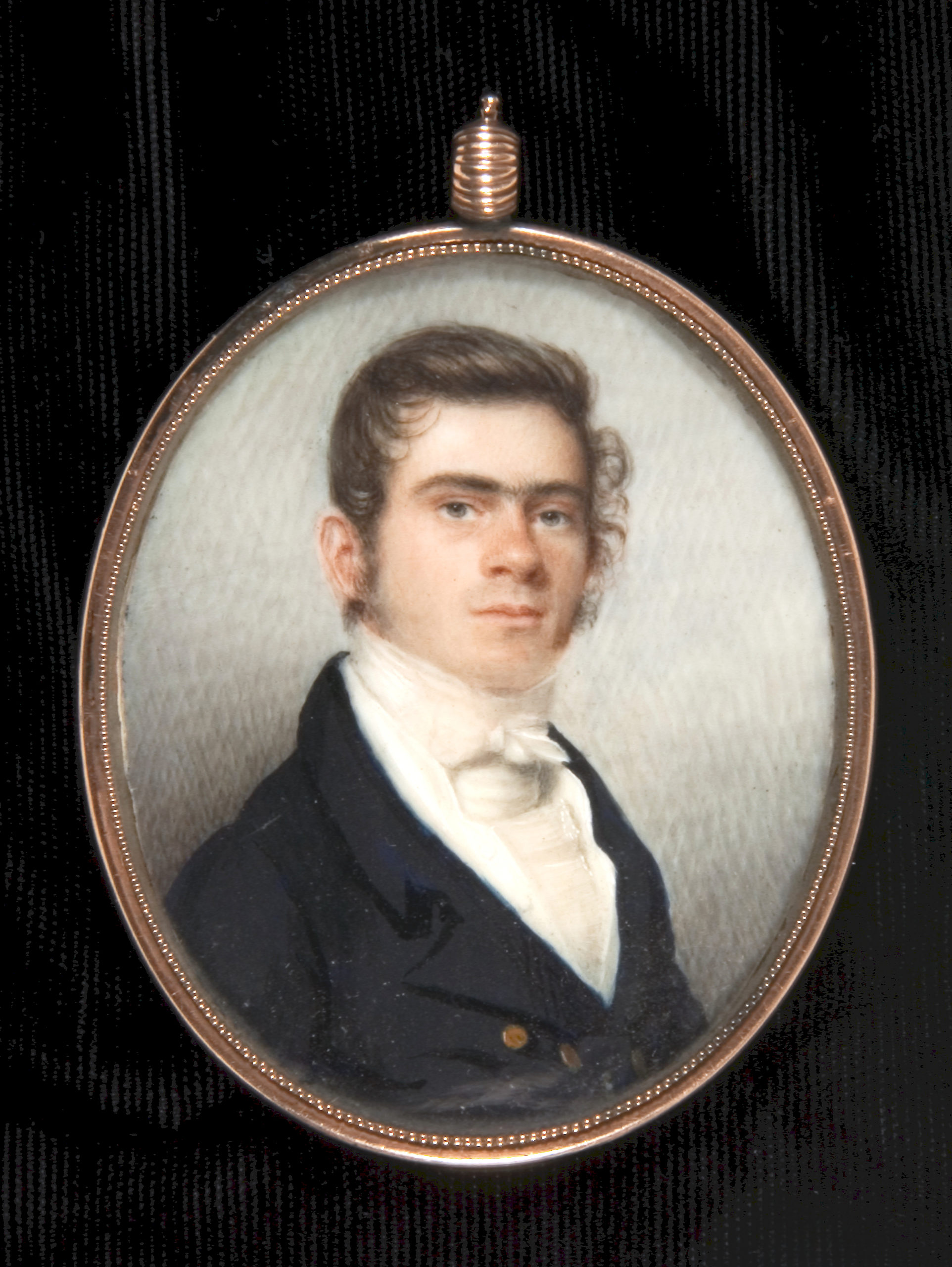
2023 recipient Damiët Schneeweisz is studying Caribbean miniatures. Portrait of Benjamin Turo of Bermuda by Eliab Metcalf, circa 1825. Smithsonian American Art Museum.
The DARTS Grant has been awarded to Krishna Shekhawat. A PhD student at the University of California, Berkeley, Shekhawat is studying an Eighteenth Century mahadol, or palanquin, in the collection of India’s Mehrangarh Museum Trust.
Hampton Smith, a doctoral candidate at the Massachusetts Institute of Technology, will travel to New Jersey to study a tool chest owned by Lucy Harris-Jackson and to Minneapolis to analyze a tool-decorated writing desk made by William Howard. Smith is examining how making hand-tools informed enslaved peoples’ resistance to slavery, as well as tracking how craftspeople made scythes, cane-cutters and hammers across the history of slave resistance.
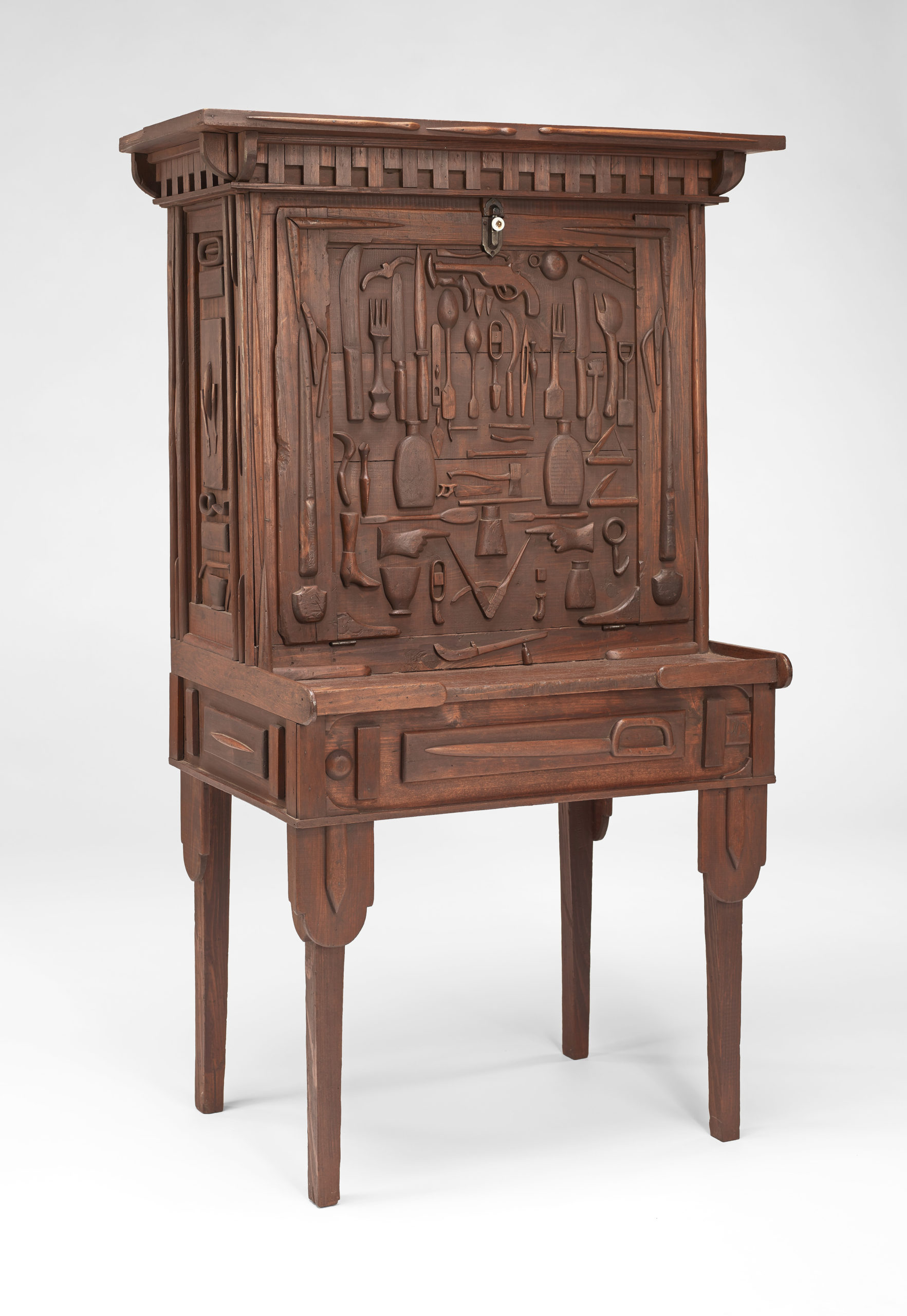
2023 recipient Hampton Smith is studying objects created by Black craftspeople, including this circa 1870 desk attributed to William Howard. Minneapolis Institute of Art.
The recipient of this year’s Marie Zimmermann Grant is Lea C. Stephenson. The University of Delaware doctoral candidate is researching Egyptian-inspired textiles and jewelry as part of her larger focus on the Nineteenth Century phenomenon of Egyptomania in the United States and Britain.
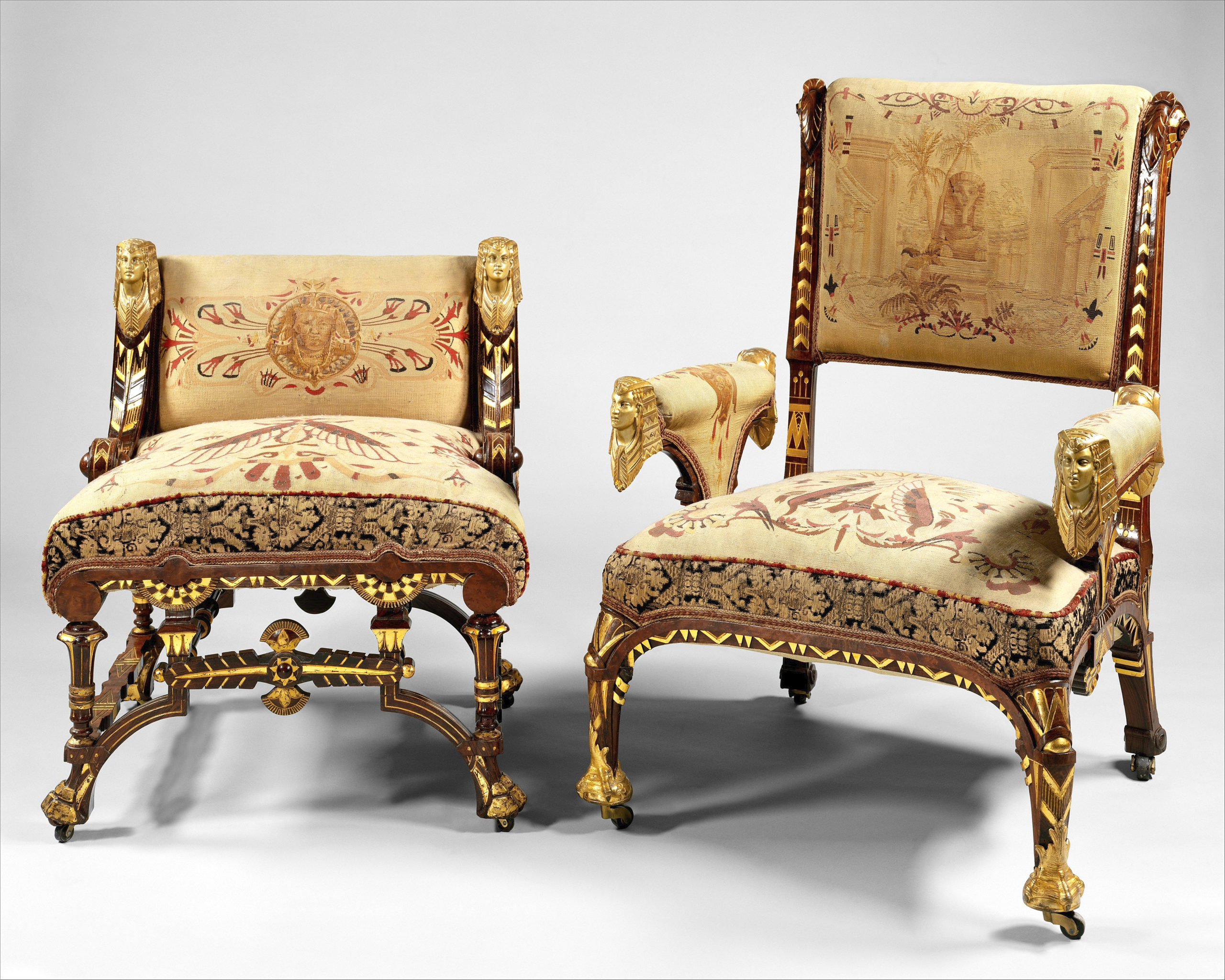
2023 recipient Lea C. Stephenson is studying Egyptian-inspired textiles and jewelry. Armchair and matching side chair attributed to Pottier and Stymus Manufacturing, 1870–75. Metropolitan Museum of Art.
Research grant applications are due by April 30 each year. Grant recipients are notified by May 15. For information, visit www.decorativeartstrust.org, email thetrust@decorativeartstrust.org or call 610-627-4970.










